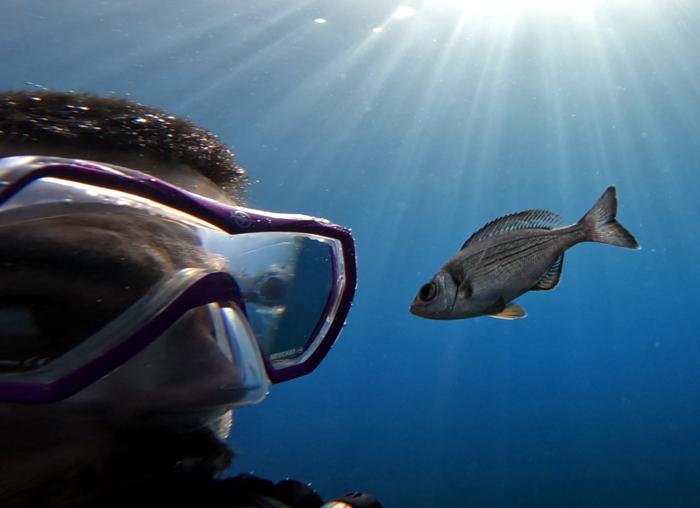Wild Fish Can Recognize Individual People, and Maybe Even Human Faces
Posted on Categories Discover Magazine

When it comes to animals with incredible memories, fish typically don’t come to mind, in fact, it’s quite the opposite. Even the poor goldfish has been accused of only having a 10-second memory, though science has proved that false.
However, a new study published in Biology Letters found that not only do certain fish have a great memory, but they’re also able to tell people apart.
Could Fish Recognize Humans?
While doing research for a different study, divers in a research station in the Mediterranean Sea found that local fish would follow them and even steal food that was intended as a reward for something else.
The divers also noticed that these local fish seemed to recognize them and knew who to follow for that food. As this continued to happen, a team from the Max Planck Institute of Animal Behavior (MPI-AB) in Germany decided that these fish were to be the subjects of a new study.
The team set out to see if these wild fish could indeed tell the difference between divers based on visual cues.
Read More: Goldfish May Have a Longer Memory Span Than Just Three Seconds
Greater Intelligence in Fish
For this study, researchers dove to depths of about 26 feet in the Mediterranean research station. Because of the frequent human presence in this area, wild fish have become accustomed to people. Within these open waters, the fish that participated in the study were all “willing volunteers who could come and go as they pleased,” Katinka Soller, a bachelor student from MPI-AB and co-first author on the study, said in a press release.
The experiment was broken up into two phases. In the first, the divers wanted to see if the fish would follow an individual person. During the first phase, Soller would wear a bright red vest and feed fish over a swim area of about 160 feet. As the days advanced, she removed the vest and would only appear in regular diving gear. She also only started feeding the fish that followed her to 160 feet.
Towards the end of the first phase, the researchers noticed two species of seabream fish would follow Soller the whole way.
According to the study, seabream is a common food fish; however, during this study, they showed great intelligence and an ability to bond with humans. Researchers were surprised by their intelligence and even gave a few of the fish names.
“Once I entered the water, it was a matter of seconds before I would see them swimming towards me, seemingly coming out of nowhere,” Soller said in a press release.
After 12 days, Soller had 20 seabreams following her, and because she could recognize the fish based on their physical traits, the research team moved on to phase two.
Fish are Friends
During the second phase, two divers entered the swim area, Soller and study co-lead Maëlan Tomasek. Each had similar diving gear but differed in certain patch and fin colors. The divers would start in the same spot in the swim area and then swim in different directions.
At first, the fish followed both divers. “You could see them struggling to decide who to chase,” Soller said in a press release. However, the fish that followed Tomasek weren’t given food. So, on the second day of phase two, more fish began to follow Soller.
To confirm their findings, the research team focused on six individual fish out of the whole group. They found that four of the fish expressed positive learning curves during the experiment.
“This is a cool result because it shows that fish were not simply following Katinka out of habit or because other fish were there,” Tomasek said in a press release. “They were conscious of both divers, testing each one and learning that Katinka produced the reward at the end of the swim.”
Other studies have shown that domestic fish can recognize human faces, and with more time, Soller believes these wild fish could tell the difference between divers based on their hair or other physical features. It’s hard to recognize a face with goggles on, but the researchers were already beginning to notice the fish approaching their faces, almost like the divers were being studied.
Read More: Do Fish Feel Pain?
Article Sources
Our writers at Discovermagazine.com use peer-reviewed studies and high-quality sources for our articles, and our editors review for scientific accuracy and editorial standards. Review the sources used below for this article:
A graduate of UW-Whitewater, Monica Cull wrote for several organizations, including one that focused on bees and the natural world, before coming to Discover Magazine. Her current work also appears on her travel blog and Common State Magazine. Her love of science came from watching PBS shows as a kid with her mom and spending too much time binging Doctor Who.